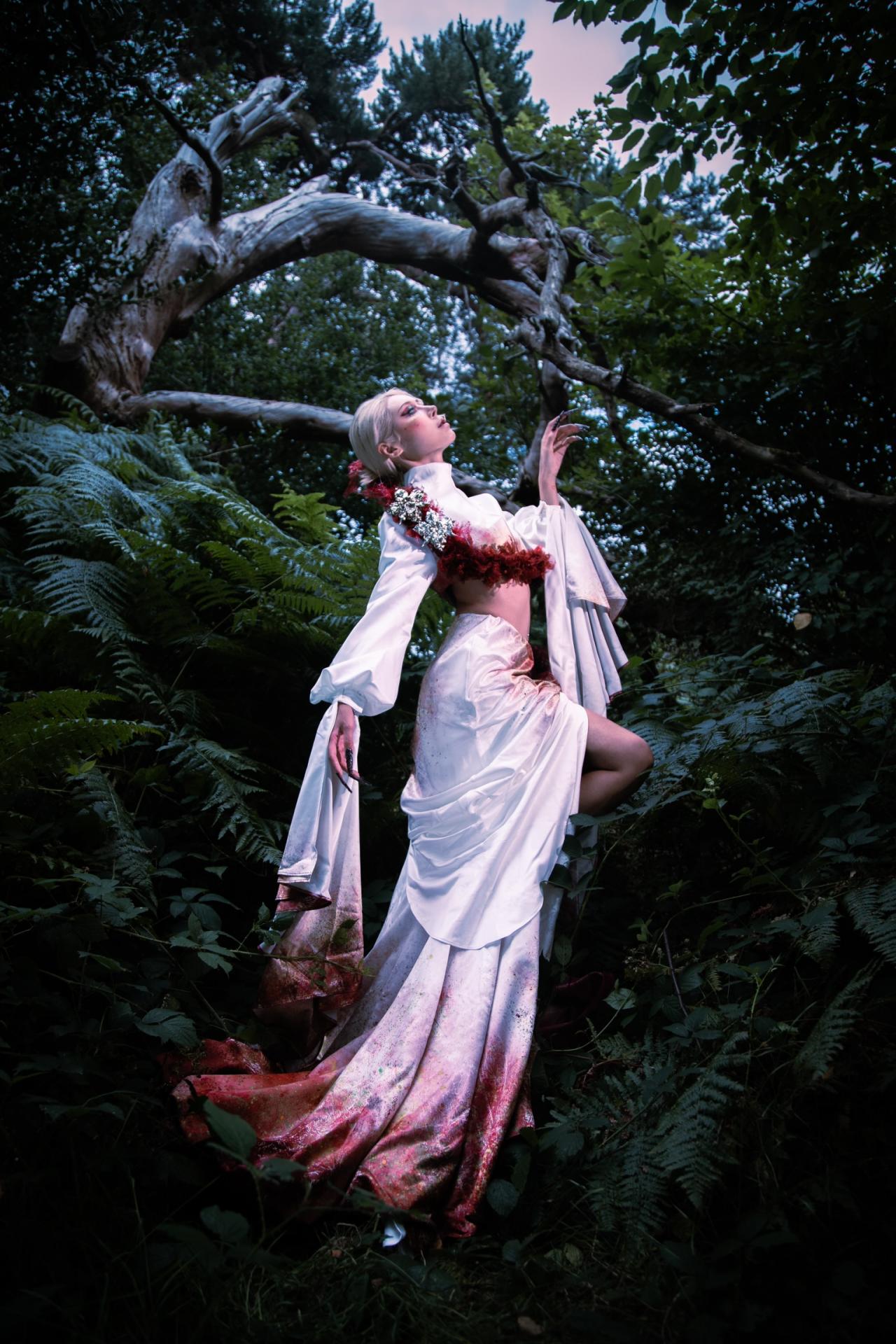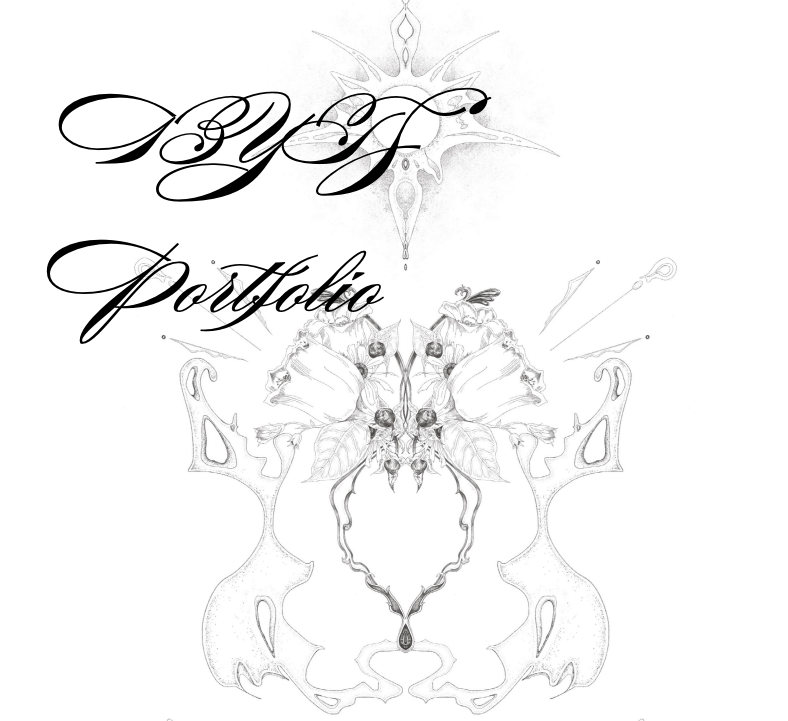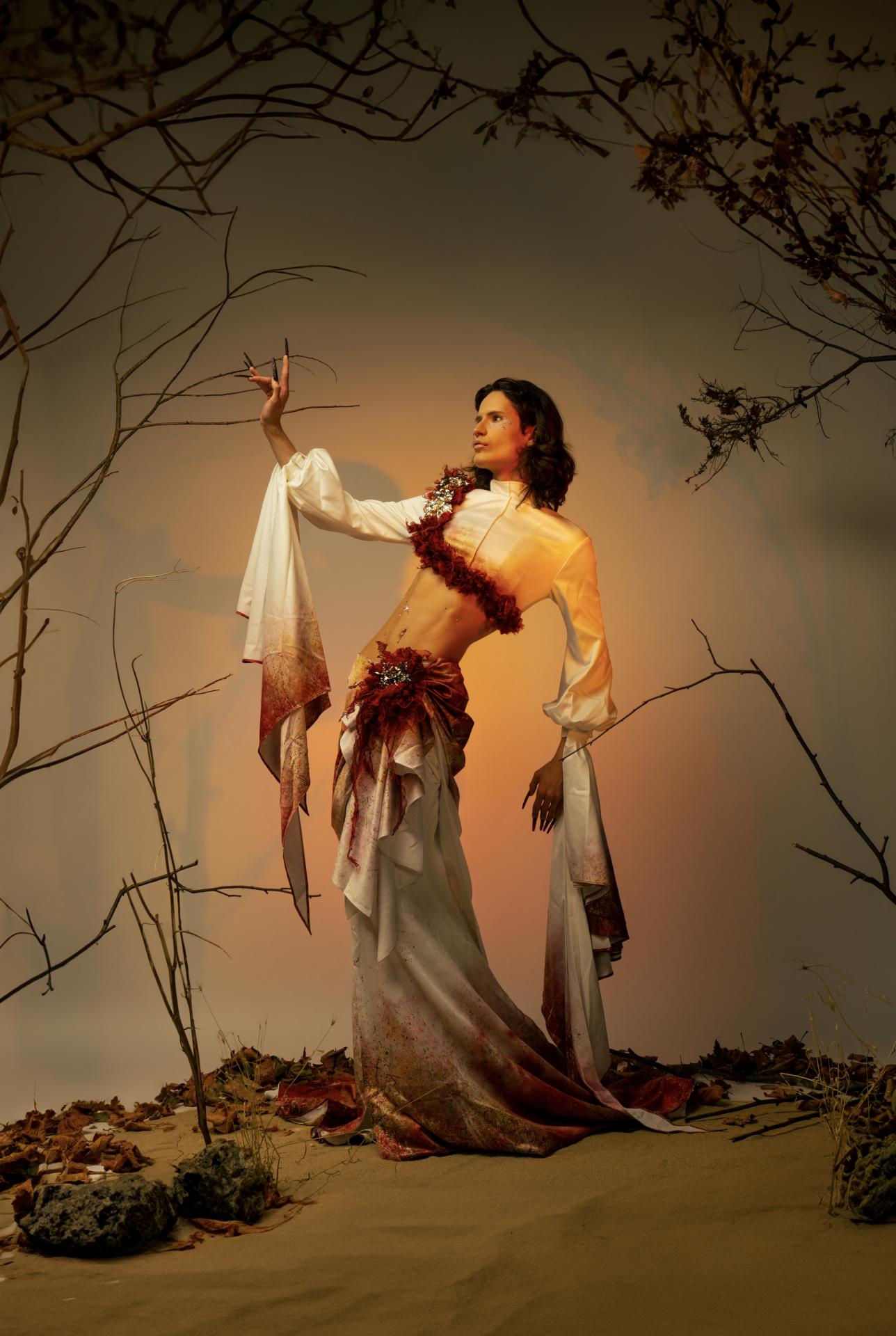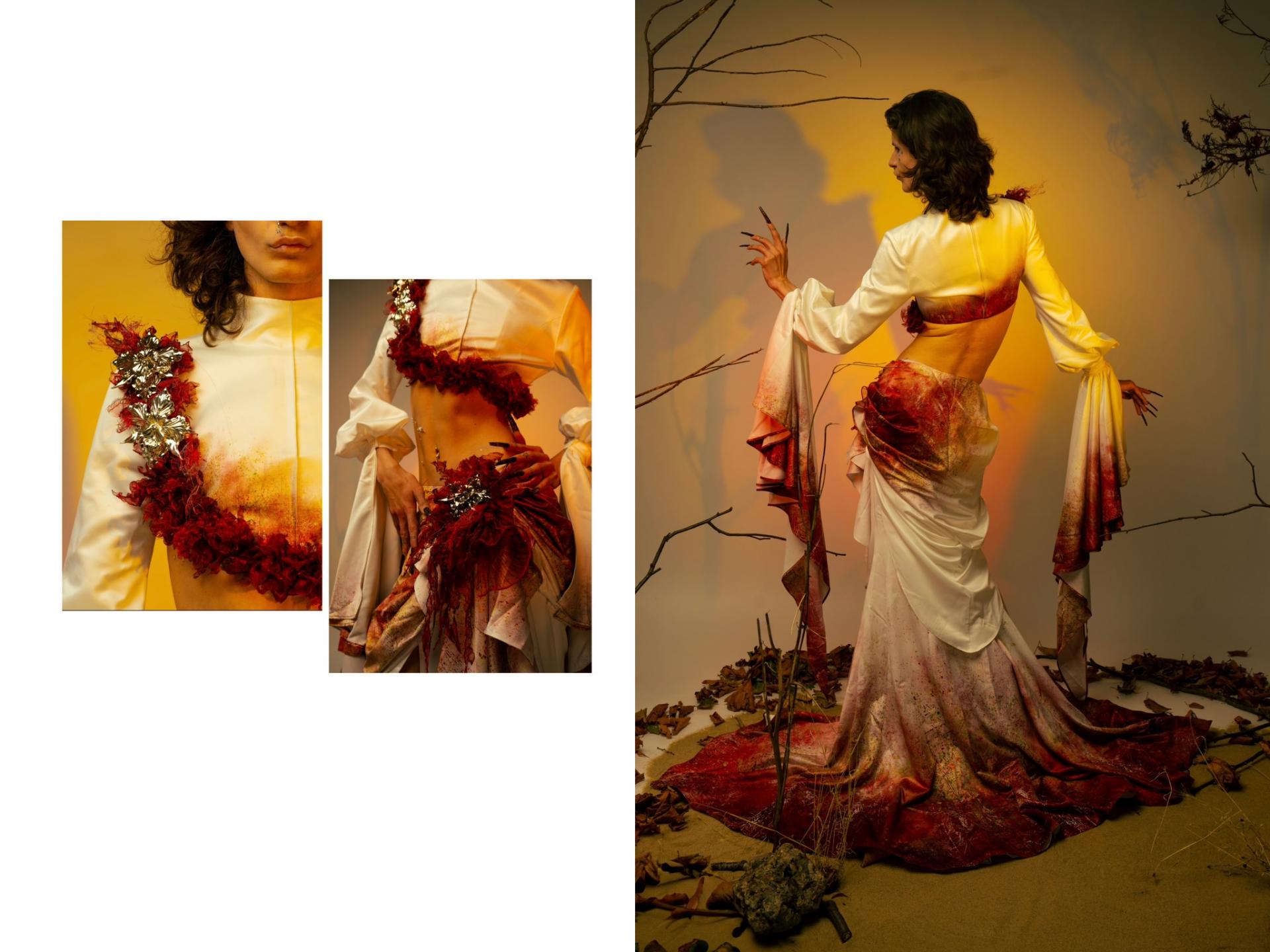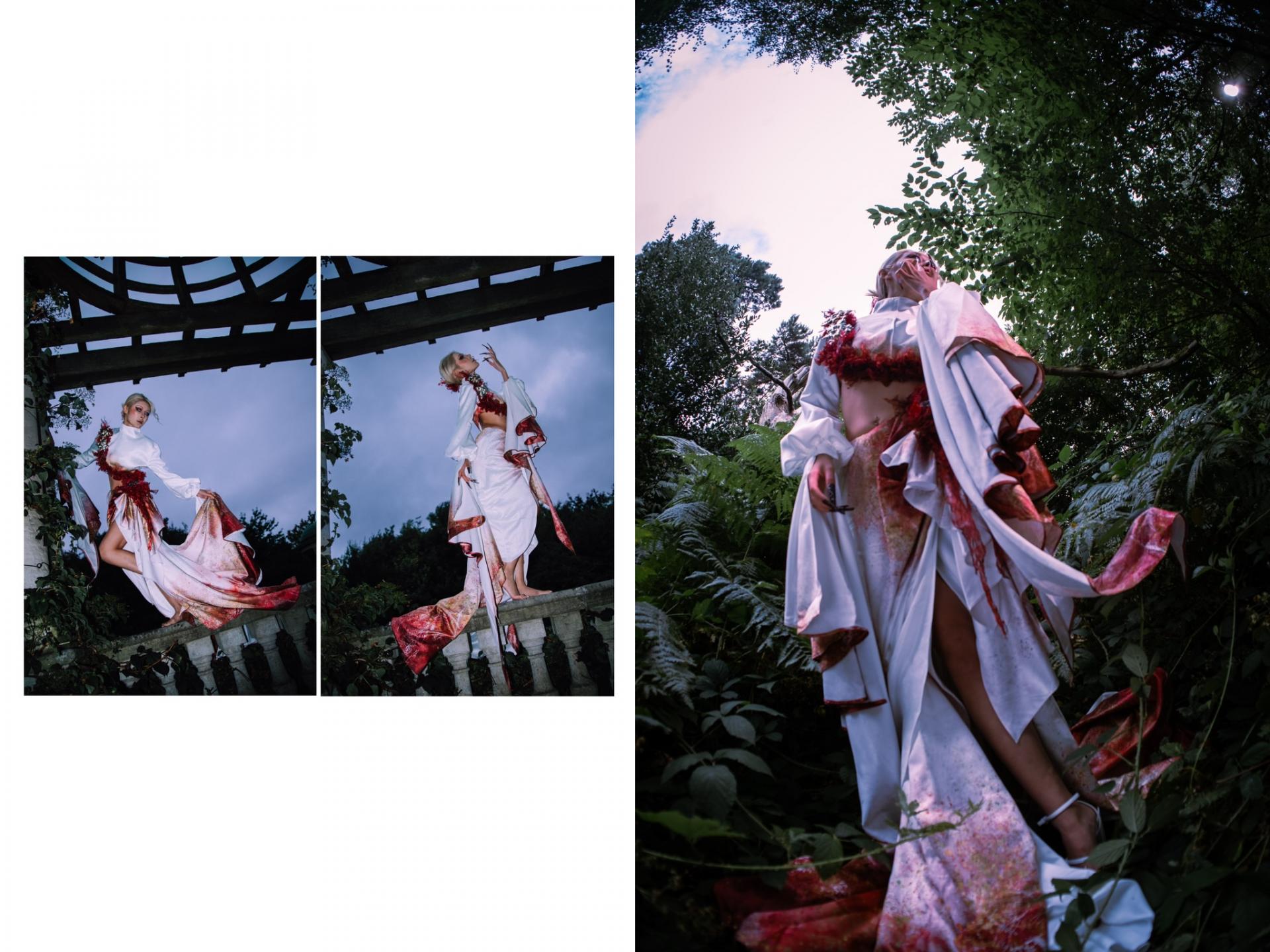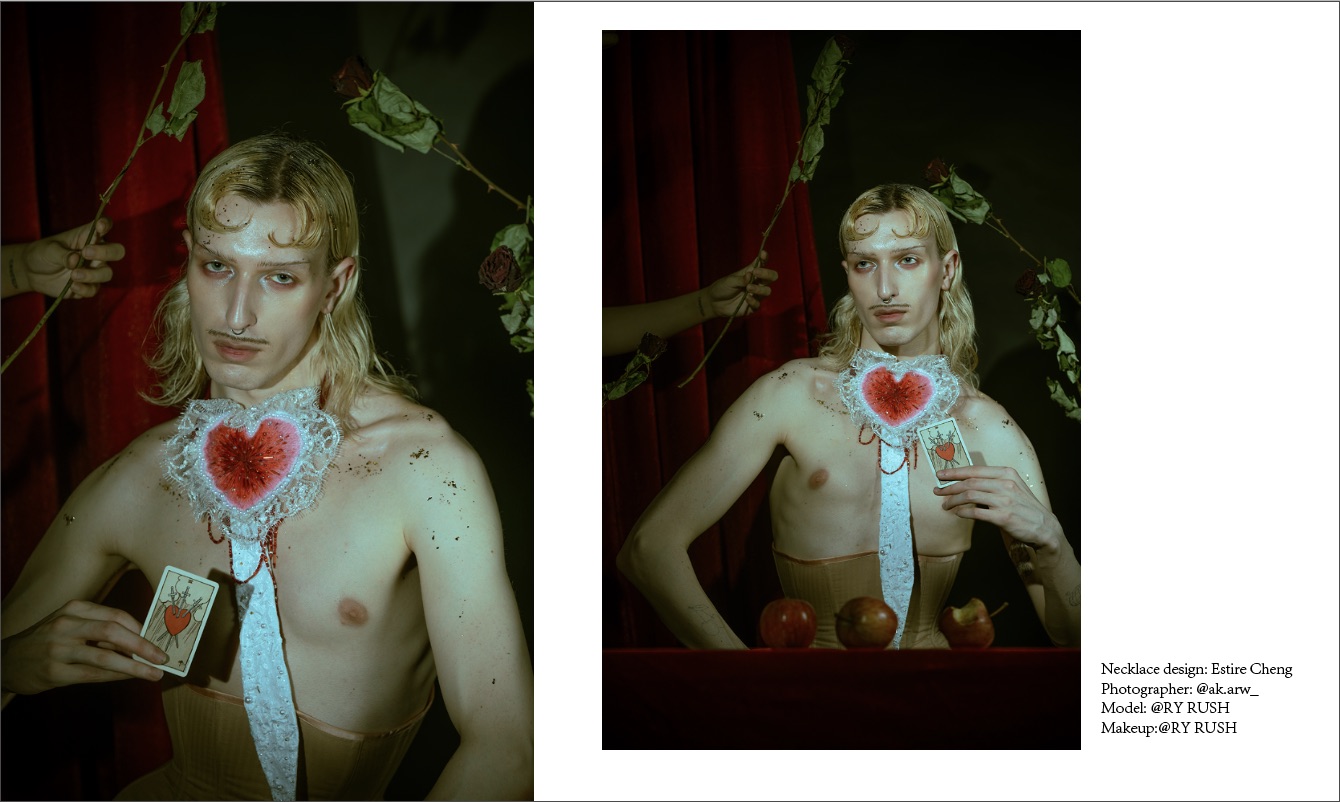For this design, the overarching theme of the SPRING25 seasonal collection for the BYTS brand is to explore the confusion that today’s youth experience in their daily lives and how they are affected by toxic relationships.
This is actually something that has always puzzled me, and as BYTS has always advocated helping consumers to better understand and express themselves, I chose such a controversial topic in the hope that people would recognize and reflect on their own behavior through my clothing.
In today’s fast-paced social environment, the classic “romance” is no longer applicable, and starting a family and getting married are no longer necessary. Today’s young people have more choices when it comes to romantic relationships. Similarly, the theme choice is in line with the BYTS brand’s sense of inclusiveness and social responsibility, and we anticipate that the themed design will provoke personal reflect.
The effects of toxic relationships on a person’s mental state can lead to a variety of inappropriate behaviors such as violent behavior, self-injurious behavior, mind control, gaslighting, neglect of the self, sexual abuse, and more. Different negative behaviors can lead to depression, anxiety and other mental problems in the victim. However, in our daily life, we often just attribute it to breakups to solve the problem, but no one pays attention to the residual mental harm of the person concerned after prolonged negative emotions. Through this design, I hope to make more people aware of the mental injuries that are not mainstream.
The eight sets of clothing in this design actually represent eight different types of emotional injuries sustained in intimate relationships. For example, the colors and shapes of the wounds caused by violent behavior, the feeling of decay caused by negative behavior, and the accessories made by using the burning technique as a feeling of suffering.
Speaking as an occult enthusiast and part-time soothsayer, the Three of Swords tarot card comes up almost every time I use tarot readings for friends around me who are caught up in a variety of different toxic relationships. This actually means something: people who are deeply involved in relationship problems generally have an extremely negative attitude towards themselves when they are heartbroken, like a storm that won’t dissipate. But the Three of Swords also symbolizes the idea that, contrary to negativity, emotional pain brings maturity, compassion and acceptance of others. We can only grow through pain. The reason why the Three of Swords made it into a necklace actually relates to my real life as well. Many of my friends who come to me for divination are unable to open up and discuss issues with each other in intimate relationships, hence the image of the Three of Swords at the bottom of the throat. But in reality, the three swords in the archetypal tarot deck are symbolizing balance, meaning that being hurt but hurt also leads to growth. However, in order to emphasize the toxic relationship more and to provoke thought, the other two swords were removed from the production and only the damage was kept.
The BYTS brand wanted to synchronize the historical and cultural parts of the campaign. So I chose three characters that are well known in mythology and history: Turandot, Salome and Narcissus.
Turandot represents a person who is oblivious to the feelings of others, so I chose a historical period in the context of play, blending French-Chinese and Chinese dress patterns with Art Nouveau styles.
The archetype of Salome appears in the Bible as an antithesis and is portrayed in Wilde’s plays as a typical image of a serpentine woman. But it is also a sad image of a woman who is mad with desire for love. The inability to properly perceive feelings as well as the frequent practice of extreme systems of behavior is not uncommon in contemporary society. Based on Salome’s historical background of the Herodian period of ancient Rome, the traditional Roman costume was restored for pattern experimentation and silhouette extraction.
The story of Narcissus is actually added as irony. The story of Narcissus, who fell in love with herself in the water and drowned in the water because she was obsessed with her own beauty, was transformed into a daffodil, so a lot of elements of daffodils were extracted. In fact, in Wilde’s story of Salome, Salome, who has just fallen in love with John the Baptist (the man beheaded for refusing Salome’s advances), is also complimented by a supporting character for being like a daffodil, alluding to the fact that Salome is actually only concerned with her own feelings. Salome’s extreme behavior is somewhat related to an inability to properly perceive feelings. The inclusion of Narcissus’ daffodil element not only mocks those similar to them, but also hopes that those who are unable to focus on themselves will in turn consider their own feelings more, rather than just giving to others and harming themselves in disguise once they fall in love.

